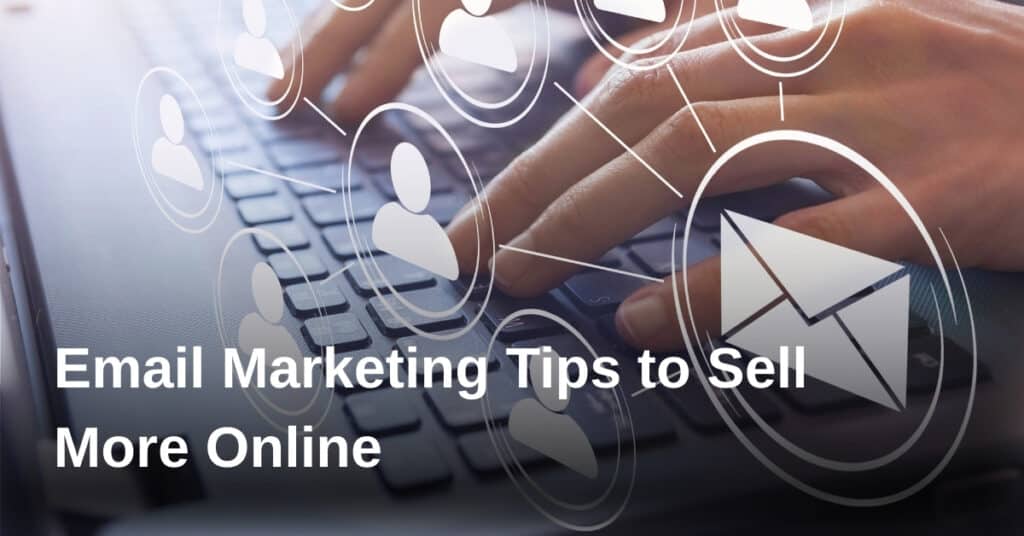
For many online businesses, reaching customers directly remains a top priority in today’s competitive digital landscape. While social media has its perks, nothing quite matches the personal touch of a well-crafted email. Email marketing stands out as a reliable and cost-effective strategy for engaging audiences and driving sales. Whether you manage a small online shop or a growing e-commerce brand, understanding how to tailor your messages can make all the difference. In my opinion, it’s not just about sending promotional offers—building a lasting connection with subscribers is equally important. Therefore, learning practical tips is essential to make your campaigns more effective and to boost your online sales naturally and sustainably.
Main Points
To excel at selling more online, focus on several key strategies: Create attention-grabbing subject lines to increase open rates; personalise your emails for a more human touch; segment your audience to ensure relevant content reaches the right people; include clear calls to action that guide recipients towards your offerings; monitor analytics to refine your approach continuously; and maintain consistency in your messaging to build trust. By integrating these main points, you can enhance engagement and encourage more conversions from your online campaigns.
Understanding the Fundamentals of Successful Email Marketing Strategies
A solid grasp of email marketing principles is key for connecting meaningfully with your audience. While everyone knows collecting subscriber data matters, knowing exactly what to do with that information can feel less obvious. Crafting compelling messages relies on understanding what your subscribers truly want, yet preferences can shift unexpectedly. There are a few elements, however, that typically drive success:
- Personalisation: tailoring content to individual interests.
- Timing: sending emails when recipients are most likely to engage.
- Clear value: providing useful offers or insights rather than generic updates.
Email marketing consistency is equally important—it builds trust, even if you’re not emailing weekly. Still, strategies may need tweaking over time because what works for one business may not suit another. Measurement is essential, but sometimes, metrics like open rates or clickthroughs only tell part of the story. Therefore, assessing both data and feedback can lead to more robust email marketing outcomes.
You Can Also Review These:
23 Email Marketing Tips to Increase Sales (+ Amazing Examples)
Crafting Compelling Subject Lines That Boost Open Rates
Crafting the perfect subject line is a nuanced part of email marketing success. A well-chosen phrase can spark curiosity or subtly nudge a recipient to click, yet what works wonders for one audience may fizzle for another. Sometimes, too much cleverness risks confusion, but a generic tone can seem uninspired. Ideally, subject lines balance clarity with a dash of intrigue, using actionable language or even a hint of urgency. Personalisation—using first names or referencing recent activity—often lifts open rates, although there’s no absolute formula. Test options regularly; small adjustments in wording or emoji use can make all the difference. Also, keeping subject lines concise helps them display fully across devices, especially mobile. Remember, email marketing thrives on building anticipation while maintaining trust. Try asking a question or hinting at exclusive value, as these tactics frequently align with recipient interests and foster higher engagement in email marketing campaigns.
Segmenting Your Email List for Higher Engagement and Conversions
Dividing your subscriber base into meaningful groups can make a world of difference in email marketing results. Rather than sending identical content to everyone, segmentation allows more personalised and timely communications. This approach can range from simple splits—such as demographics or location—to more nuanced separations, like purchase history or engagement patterns. One could argue that the process isn’t always straightforward, as subscriber preferences may shift over time, or overlap across categories. Nevertheless, consistently updating your segments can help maintain relevance, which often leads to higher open and click-through rates. Additionally, effective segmentation lets you tailor offers and messages, increasing the likelihood of conversions. While determining ideal segments can involve some trial and error, it’s generally worth the effort. In summary, understanding your subscribers’ unique needs through careful segmentation remains a core driver of successful email marketing and overall email marketing strategy.
Personalisation Techniques to Drive Online Sales
Personalisation has become essential for businesses aiming to enhance online sales. By tailoring web experiences, brands can create meaningful connections with visitors. Tactics often start with segmenting users based on browsing behaviour or past purchases. For instance, presenting recommended products can subtly increase the chance of a sale, although its real impact sometimes varies across industries. Another common approach is dynamic website content, which adapts in real-time to individual preferences, but actual conversion rates can still surprise brands—both positively and negatively. Only with well-timed offers and adaptive messaging can you ensure relevance.
Furthermore, integrating email marketing automation makes it possible to send highly targeted messages. Some companies use personalised email marketing to recover abandoned baskets, whereas others prefer regular, value-driven newsletters to build trust. Yet, the effectiveness of email marketing still depends on timing, content quality, and audience preferences. In my opinion, balancing automation with a human touch is key in these campaigns.
Optimising Email Design for Mobile and Desktop Devices
Striking the right balance between visual appeal and functionality is essential for effective email marketing campaigns. Audiences are no longer confined to one device, so your messages must look sharp and readable everywhere. In my opinion, responsive design plays a vital role here, yet perfect results aren’t always guaranteed. Images should be scalable, and text must remain legible—even when displayed on smaller screens. A single-column layout often works best for mobile, whereas more complex arrangements might shine on desktops. However, make sure buttons and links remain easy to tap regardless of device. Additionally, some email marketing tools offer previews for different platforms, which can reduce trial and error. Still, real-world testing matters because quirks may arise that automated checks miss. Optimisation is rarely a one-size-fits-all process; hence, regularly reviewing campaign performance is necessary for any successful email marketing strategy.
A/B Testing: Fine-Tuning Email Campaigns for Maximum Impact
A/B testing remains one of the most reliable ways to optimise email marketing performance. By sending two or more variations of an email to small segments of your list, you can identify which version captures the audience’s attention or leads to more conversions. This might mean tweaking subject lines, call-to-action buttons, or even content placement. However, results can sometimes surprise marketers; what works for one group may not resonate with another, hence multiple tests are often necessary.
“Small changes in email marketing strategies can yield big differences in response rates, yet not every result is entirely predictable.”
Additionally, A/B testing helps clarify what truly drives engagement, eliminating guesswork but always leaving space for a bit of uncertainty. Therefore, those dedicated to email marketing excellence should treat testing as an ongoing habit, not a one-time task, especially if lasting effectiveness is the goal.
Integrating Persuasive Call-to-Actions to Increase Sales
A well-crafted call-to-action (CTA) can make all the difference in your sales strategy. Particularly in email marketing campaigns, CTAs guide recipients towards taking desired actions, such as making a purchase or subscribing. The wording, positioning, and design of your CTA matter; a subtle change in language could nudge more users to click, though the exact impact may not always be immediately clear. To effectively integrate CTAs, consider the following steps:
- Clear purpose: Each CTA should align with your sales goal.
- Compelling language: Use persuasive, action-oriented phrases to motivate engagement.
- Visibility: Place the CTA where it’s easy to find, such as at the end of a email marketing message.
Testing different CTA styles within your email marketing funnel may reveal surprising results, revealing which approaches resonate best. Remember, sometimes even subtle enhancements bring about noticeable increases in conversions. Therefore, continually optimise your approach while staying attentive to your audience’s reactions.
Analysing Key Metrics to Improve Email Campaign Performance
To elevate your email marketing results, examining certain metrics is vital. Open rate, click-through rate (CTR), and conversion rate stand out as the most telling indicators of campaign success, but each metric can offer slightly different insights depending on your audience and goals. For example, a high open rate may indicate compelling subject lines, whereas a strong CTR suggests recipients are engaged with your content. Nevertheless, conversions often reveal the true impact of your efforts, although tracking them accurately may occasionally present challenges. Additionally, consider monitoring unsubscribe and bounce rates, as these can flag broader issues in your email marketing strategy. By comparing these metrics over multiple campaigns, you may spot clear trends—sometimes patterns are subtle and take time to emerge. Careful metric analysis should guide content adjustments, timing changes, or even a full reassessment of your email marketing approach, ultimately fostering ongoing improvement.
Leveraging Automation for Consistent and Targeted Messaging
Automation has transformed the landscape of email marketing by enabling businesses to maintain steady communication with their audience. Unlike manual efforts, automated workflows deliver messages at precisely scheduled times—whether for promotions, updates, or reminders. This helps nurture leads, build trust, and, in many cases, boost engagement. However, the real advantage comes from the ability to segment recipients based on their behavior and preferences. Accordingly, you can tailor campaigns, ensuring that the right content reaches the right person. While it may seem that automation could make interactions less personal, carefully crafted triggers can make each email marketing touchpoint feel relevant and timely. Additionally, automation reduces the risk of human error, but there is always a need for regular reviews to fine-tune messaging and avoid becoming overly mechanical. To sum up, adopting automated email marketing solutions brings consistency, relevancy, and efficiency, although it requires ongoing attention to achieve the best results.
Ensuring Compliance: GDPR and CAN-SPAM Best Practices in Email Marketing
Navigating legal frameworks is essential for ethical email marketing campaigns. The GDPR requires clear consent, meaning subscribers must actively opt-in before receiving promotional emails. Yet, the details about data collection and processing can feel overwhelming at times. Under GDPR, users must also have easy access to unsubscribe at any point. Therefore, it’s vital to keep unsubscribe mechanisms prominent, even though some marketers may hesitate to make them too visible. Similarly, the CAN-SPAM Act emphasizes honest subject lines and valid physical addresses in all emails, but wording nuances can sometimes blur the lines.
For better clarity, consider this brief comparison:
| Regulation | Key Requirement |
|---|---|
| GDPR | Explicit consent before email marketing |
| CAN-SPAM | Clear opt-out and honest content |
Adhering to these best practices demonstrates respect for your recipients’ preferences. Accordingly, compliance isn’t just about ticking boxes—it’s a trust-building strategy for sustainable email marketing growth.
Conclusion
In the end, mastering email marketing can truly set your online business apart. It’s all about listening to your audience, sharing value, and building genuine connections through thoughtful messages. Although there isn’t a one-size-fits-all approach, staying focused on your customers’ needs makes your campaigns far more effective. Additionally, by testing and refining your strategies, you give your business a better chance to thrive in a crowded marketplace. In my opinion, consistency and authenticity in email marketing will keep your subscribers engaged and, ultimately, encourage them to buy from you again and again.
Related Articles:
How to Sell Accessories Online: A Beginner’s Guide
